Paul Cézanne’s paintings don’t just depict the world—they reconstruct it. With every brushstroke, he challenged the conventions of art, paving the way for modern movements like Cubism and abstraction. His unique eye for structure and colour made him one of France’s most influential painters—and a true bridge between Impressionism and modern art.
Paul Cézanne was born in 1839 in the sun-drenched town of Aix-en-Provence. Though his father wanted him to become a lawyer, Cézanne was drawn to painting from an early age. He eventually left for Paris, where he formed a lifelong friendship with the writer Émile Zola and connected with artists of the burgeoning Impressionist movement.
Unlike many of his contemporaries, Cézanne was less interested in capturing fleeting light and more focused on form, structure, and geometry. He once said he wanted to “treat nature by the cylinder, the sphere, and the cone”—and in doing so, laid the foundation for 20th-century modernism.
His works were often misunderstood in his lifetime, but today, Cézanne is considered a father of modern painting.
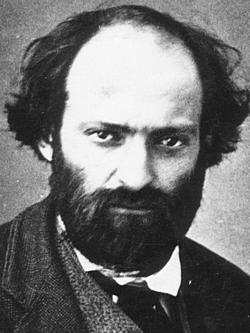
French often uses the verb "peindre" to express “to paint”:
Did you know? Though Cézanne exhibited with the Impressionists, he often painted alone—obsessed with capturing the essence of his
subjects through deliberate, layered brushwork.
Cézanne’s style is instantly recognisable for its brushy textures, bold colour planes, and careful composition. Whether painting still lifes, landscapes, or portraits, he broke down complex subjects into fundamental shapes—revealing a new way to see the world.
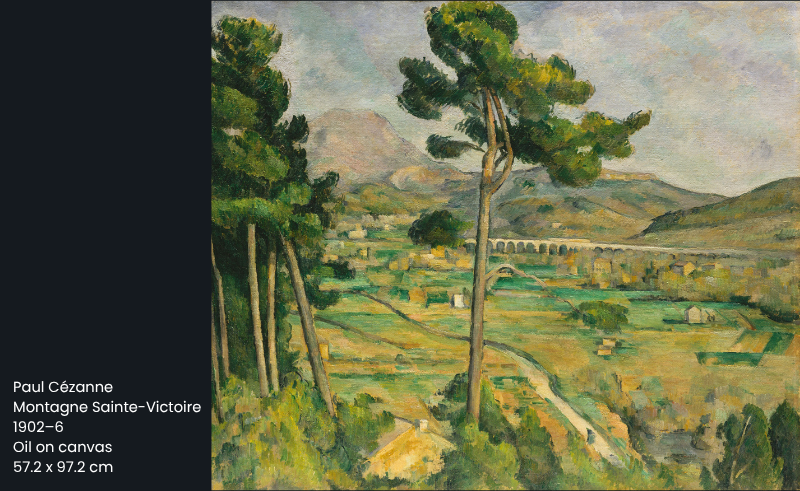
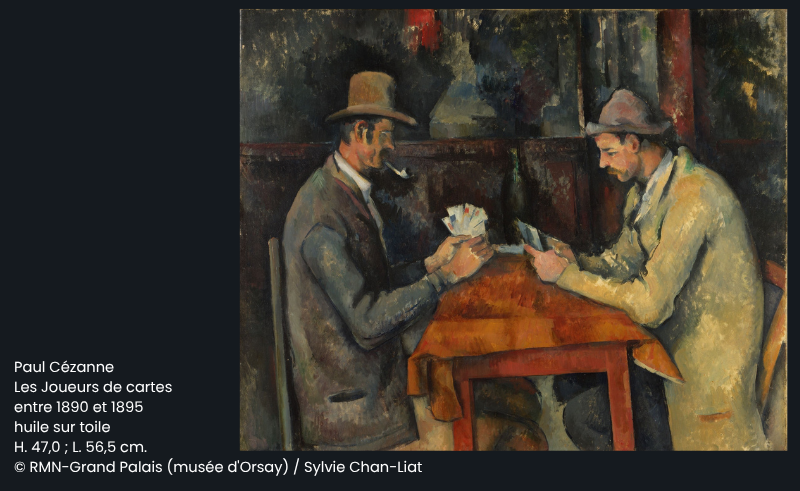
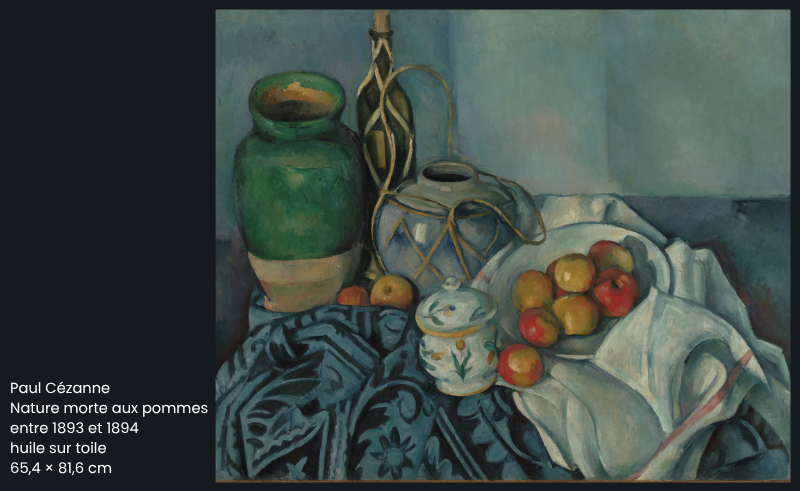
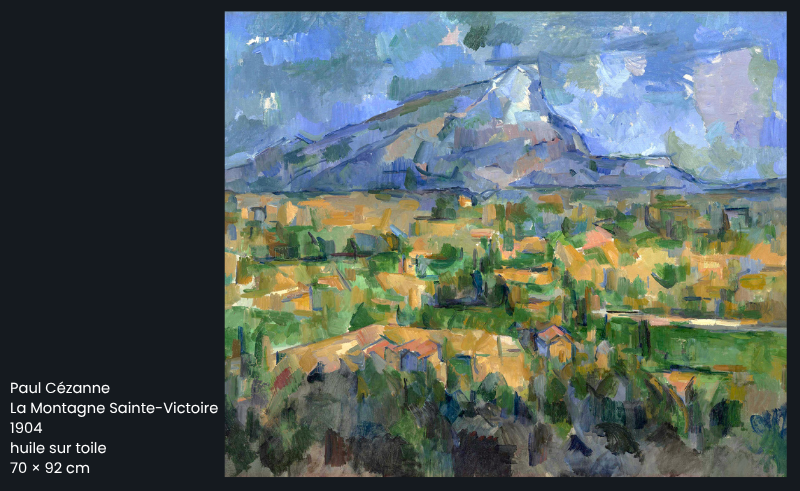
Montagne Sainte-Victoire (Mont Sainte-Victoire)
1885–1906
A recurring subject for Cézanne, this mountain near his hometown appears in more than 30 works. With each version, he explored perspective, colour, and form. See one of the most iconic versions at the Metropolitan Museum of Art.
Les Joueurs de cartes (The Card Players)
1890–1895
A powerful, meditative portrait of two men engaged in a simple card game. Quiet, tense, and utterly timeless. One version is housed at the Musée d'Orsay in Paris.
Nature morte avec pommes (Still Life with Apples)
c. 1895
Cézanne’s still lifes are renowned for their composition and colour. The tilted surfaces and shifting angles defy realism—but feel perfectly balanced. This one is in the collection of the MoMA in New York.
La Montagne Sainte-Victoire - (Mont Sainte-Victoire)
1904–1906
One of Cézanne’s final paintings, it distills landscape into structure and tone. Brushstroke by brushstroke, the mountain becomes both real and abstract. It is housed at the Philadelphia Museum of Art.
French vocabulary:
Unlike many of his peers, Cézanne often worked in isolation. He was known for his intensity and perfectionism, sometimes painting the same subject dozens of times. His devotion to his craft was absolute.
He once said: “Je veux faire de l’impressionnisme quelque chose de solide et durable comme l’art des musées”— I want to make Impressionism something solid and lasting like the art of the museums.
Cézanne’s vision reshaped art history. Through discipline and imagination, he taught us to see beyond the visible.
Grammar tip:
In French, adjectives like "solide" (solid) agree in gender and number with the noun they describe. Notice: "une œuvre solide" (a solid work) uses the feminine form to match "œuvre".
You can find Cézanne’s masterpieces in top museums across the globe—from the Musée d'Orsay in Paris to MoMA in New York and the National Gallery in London. Or browse online via Google Arts & Culture, the Philadelphia Museum of Art, or the Musée d'Orsay.